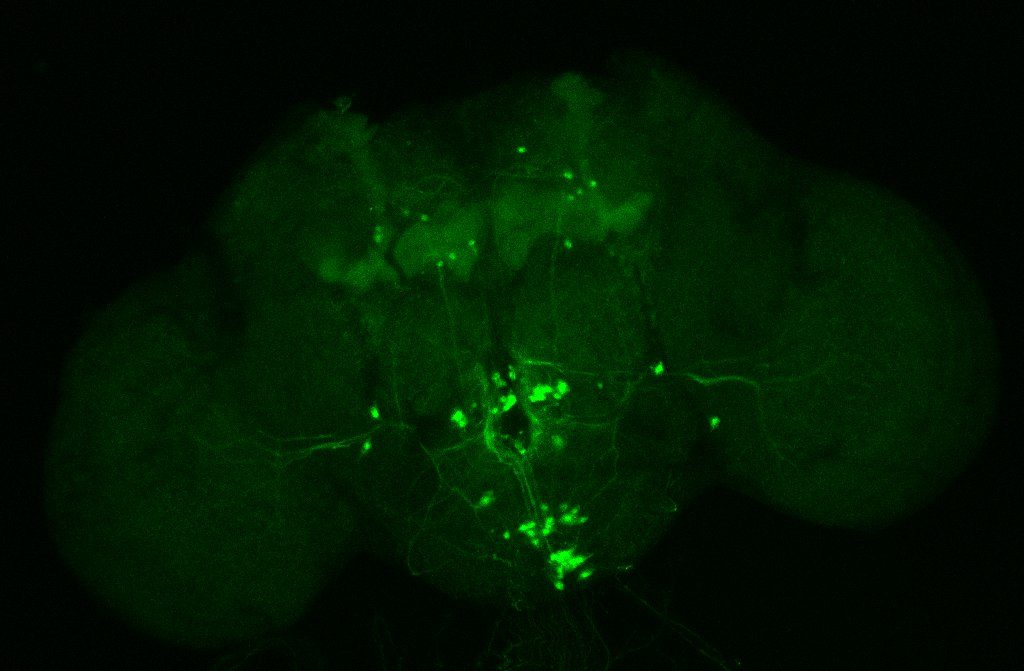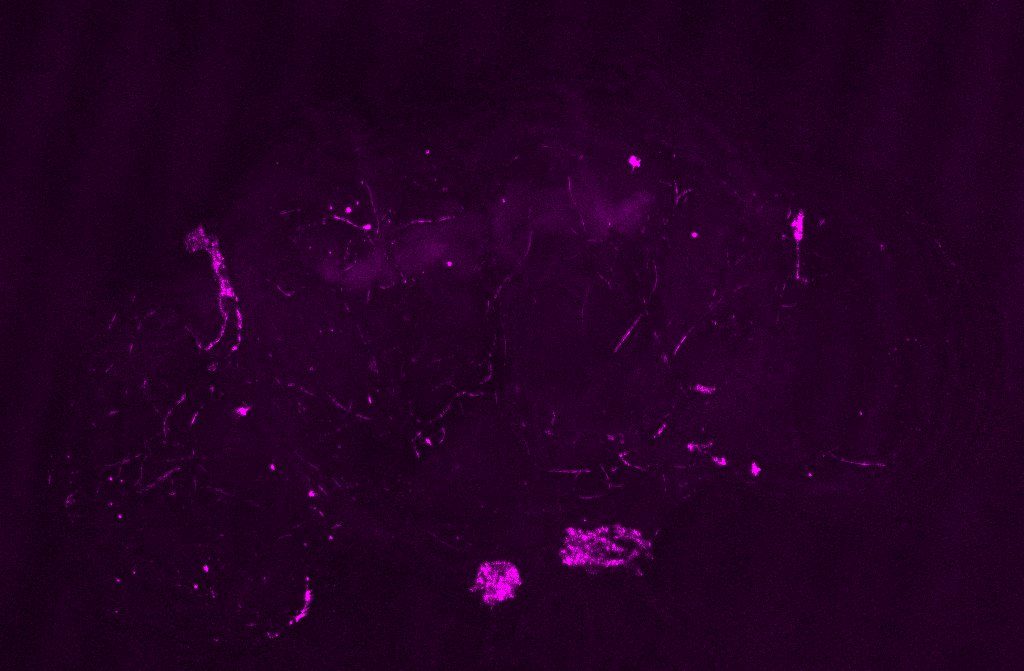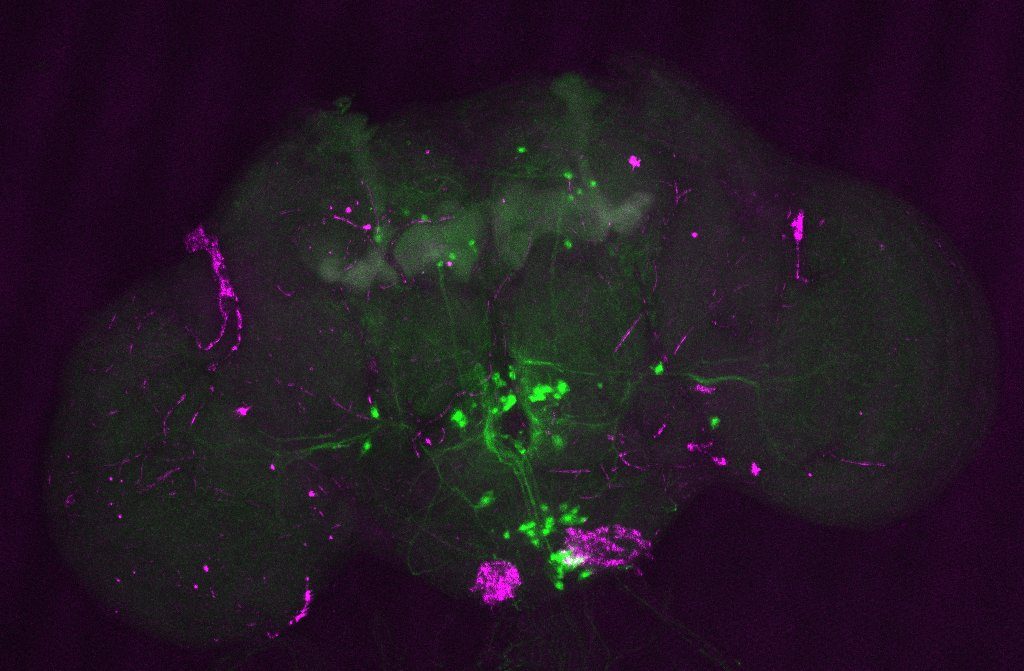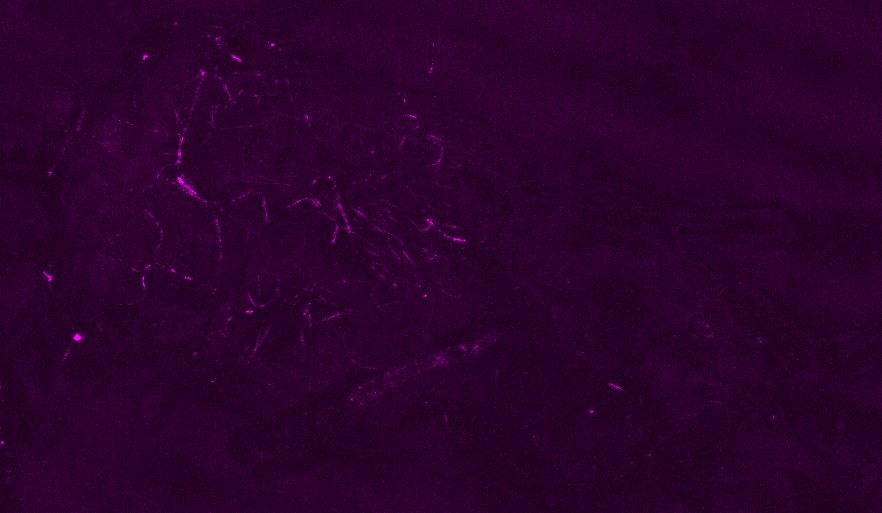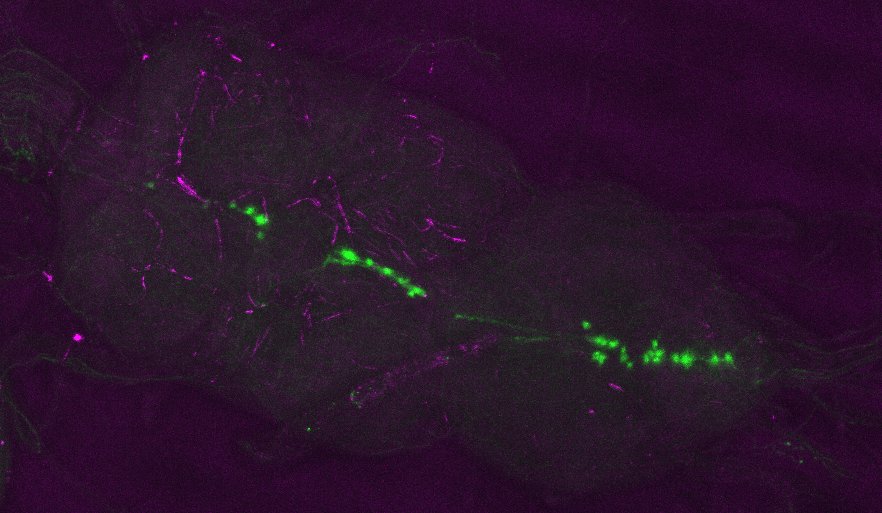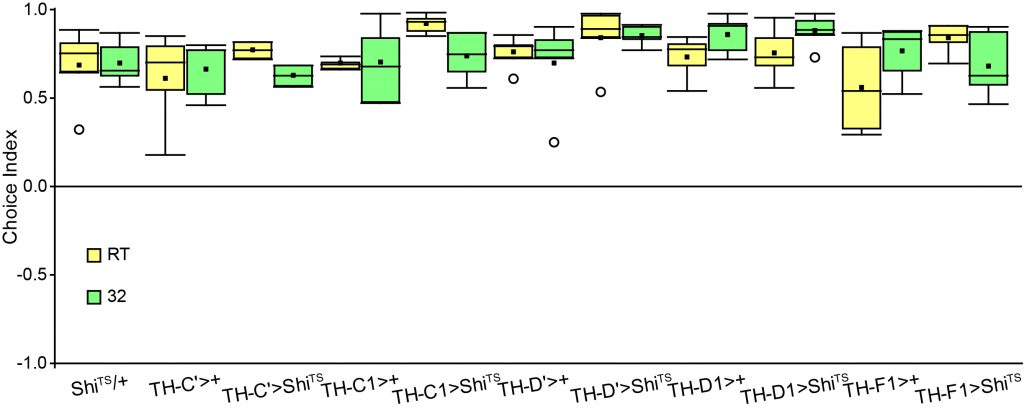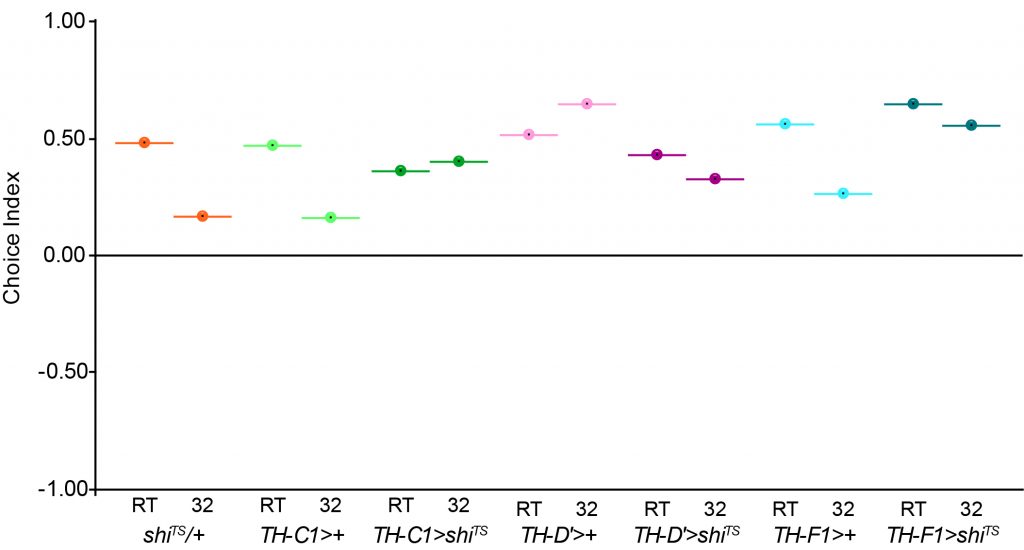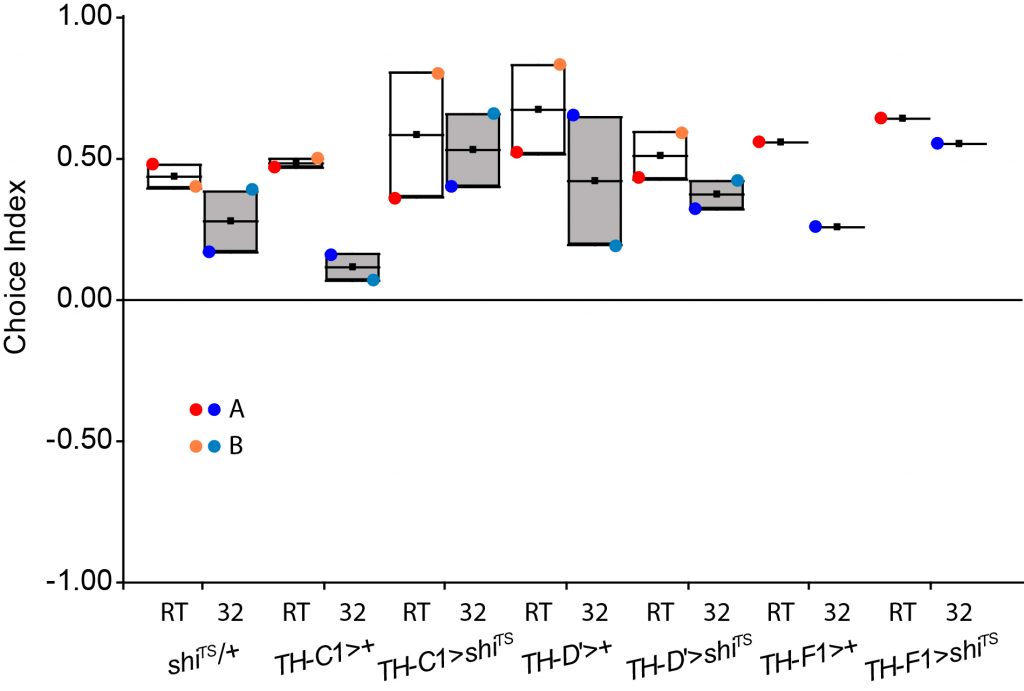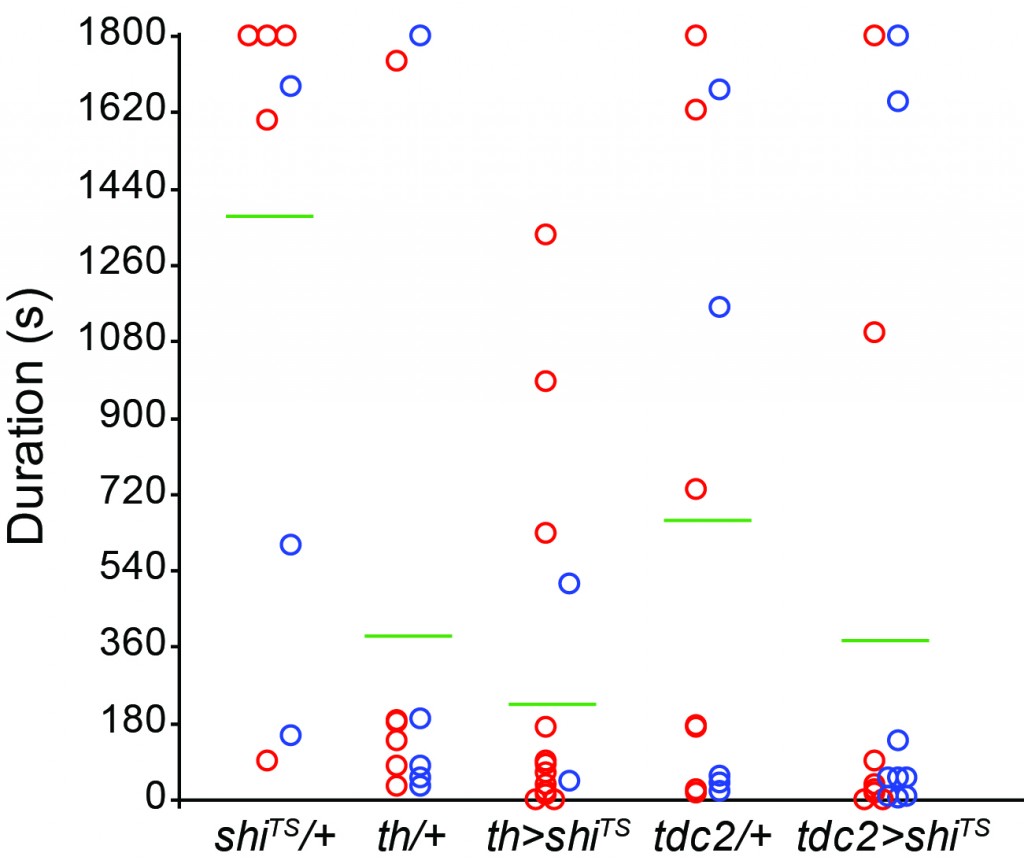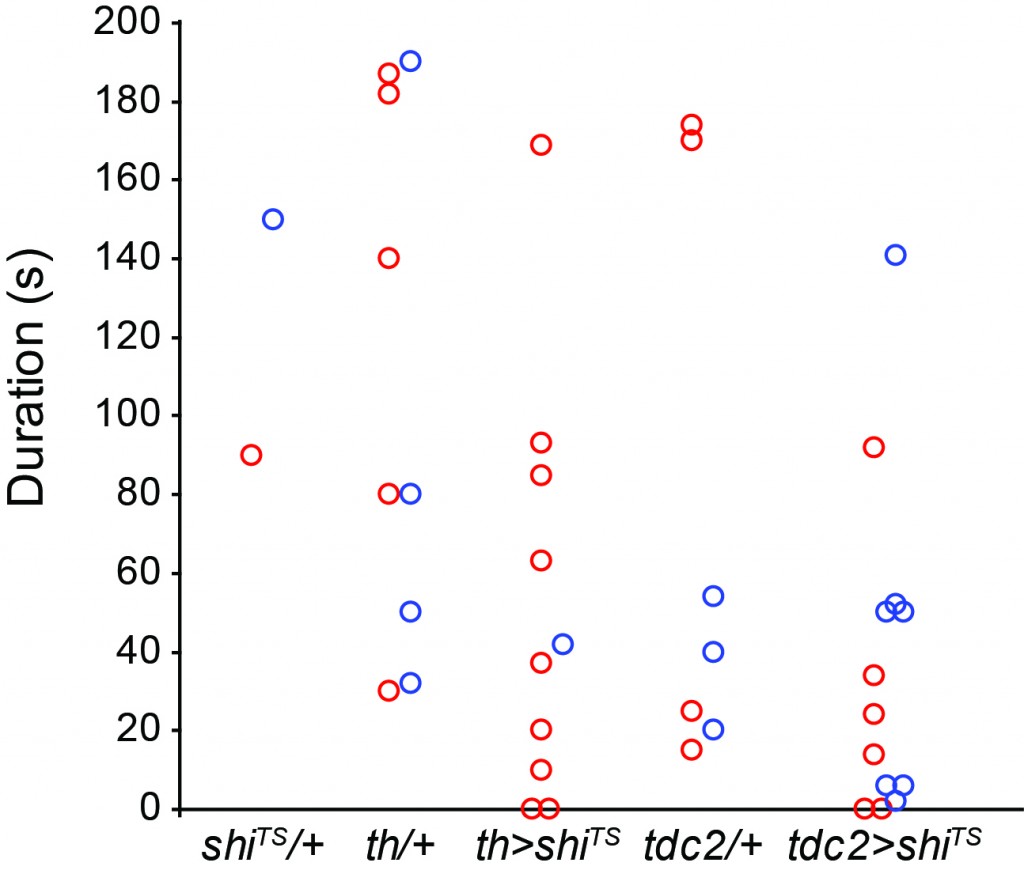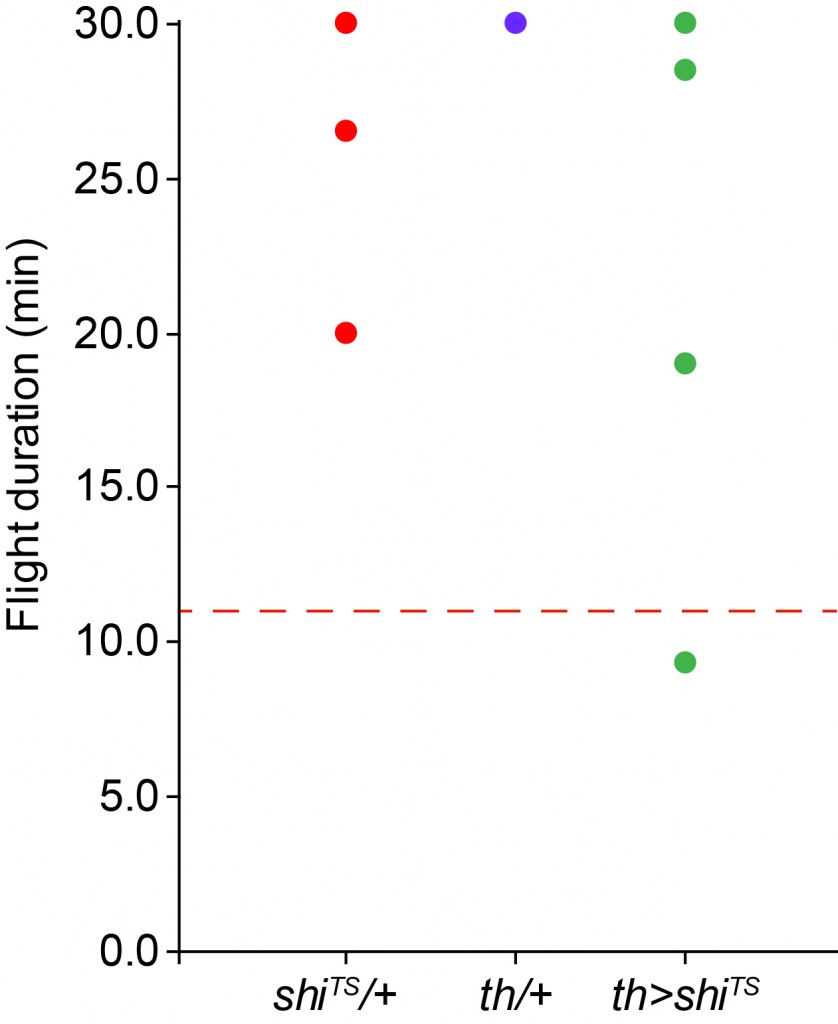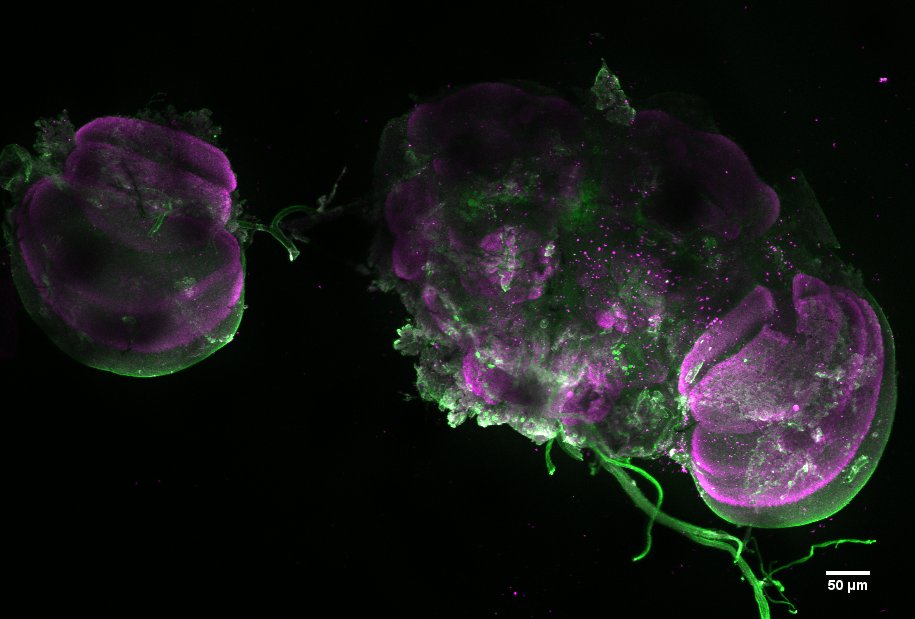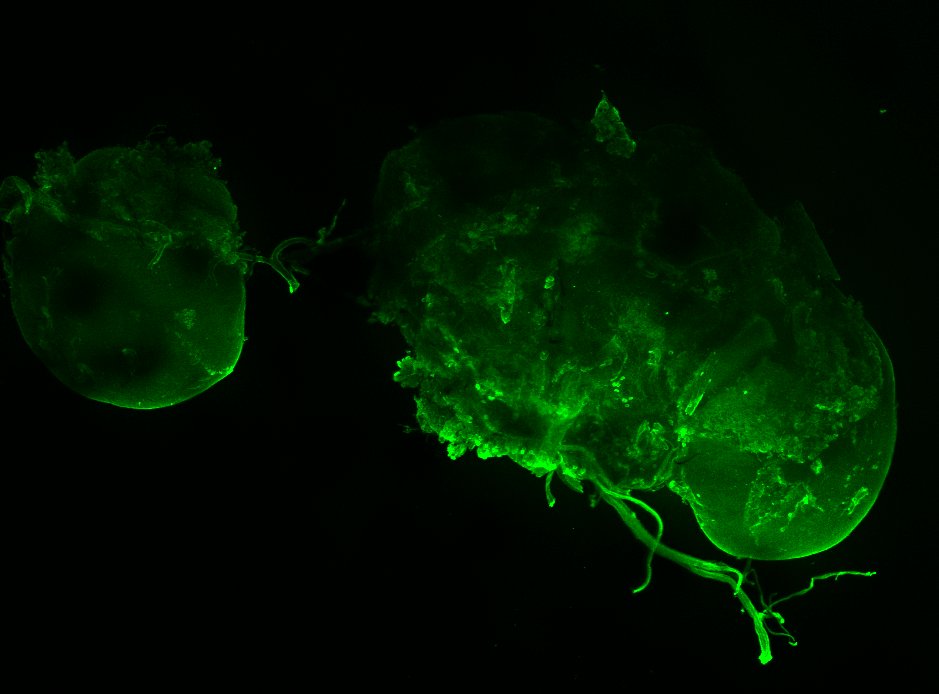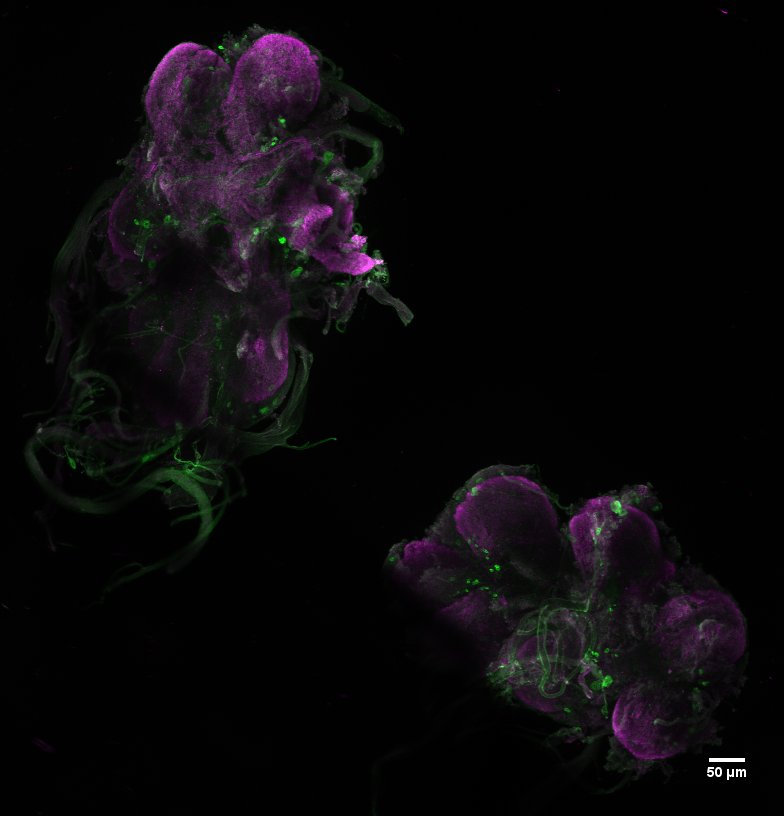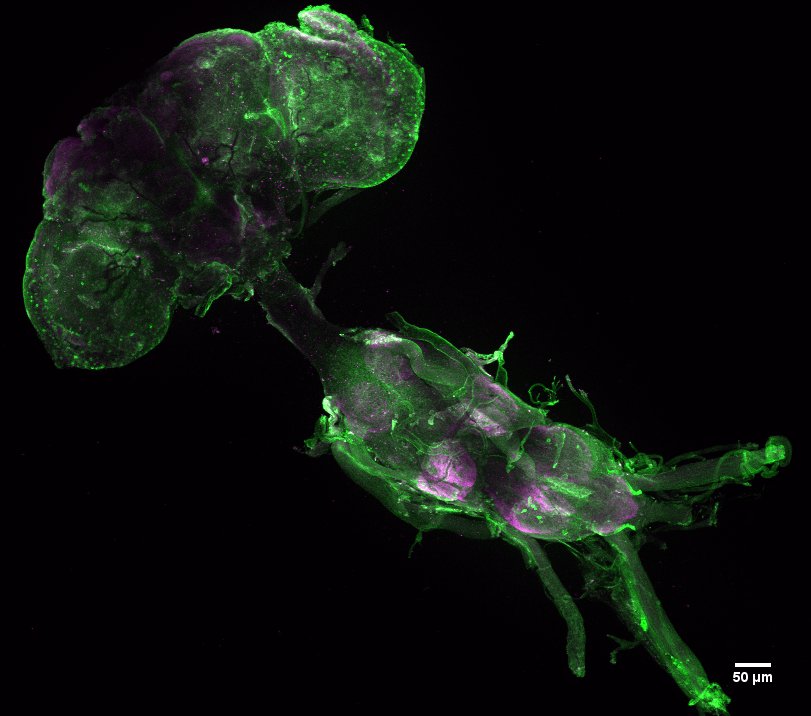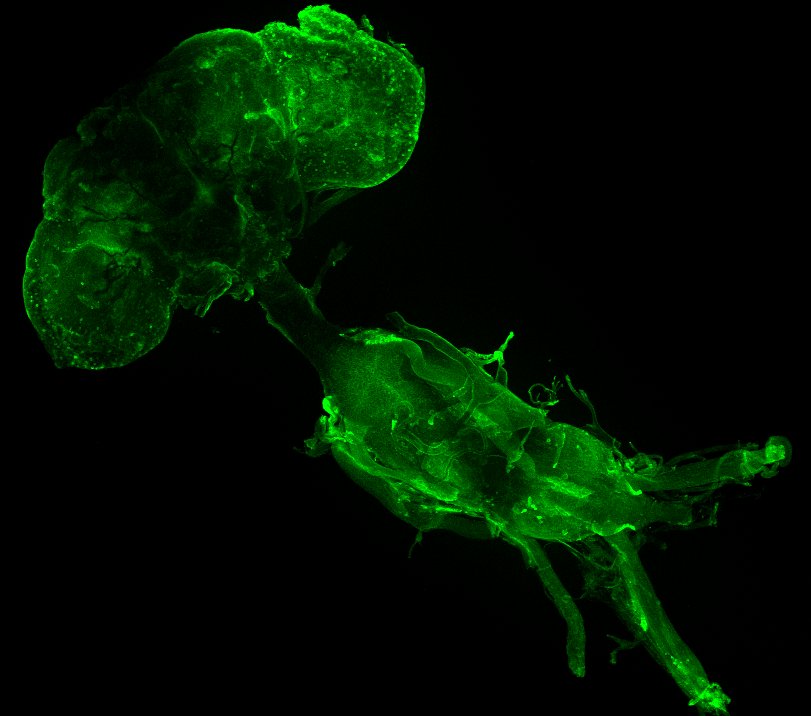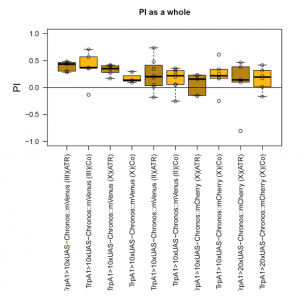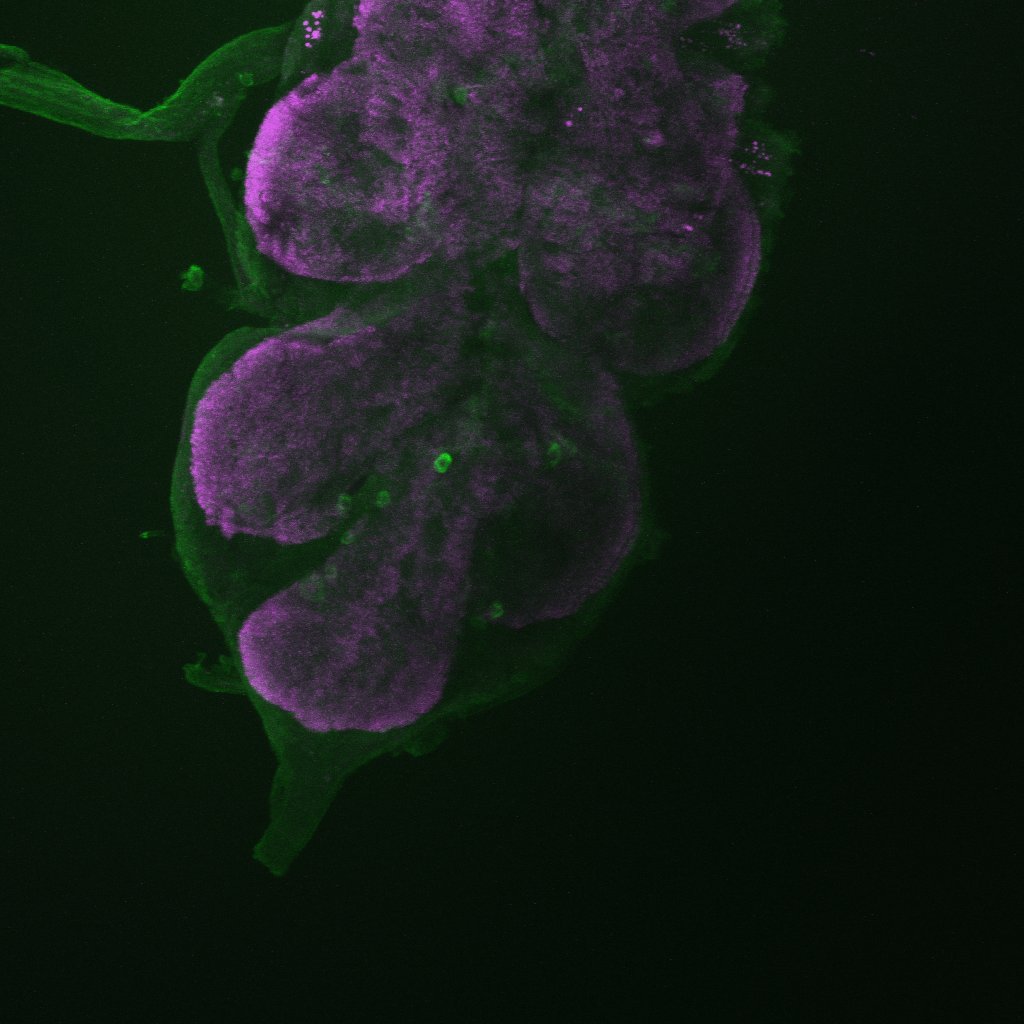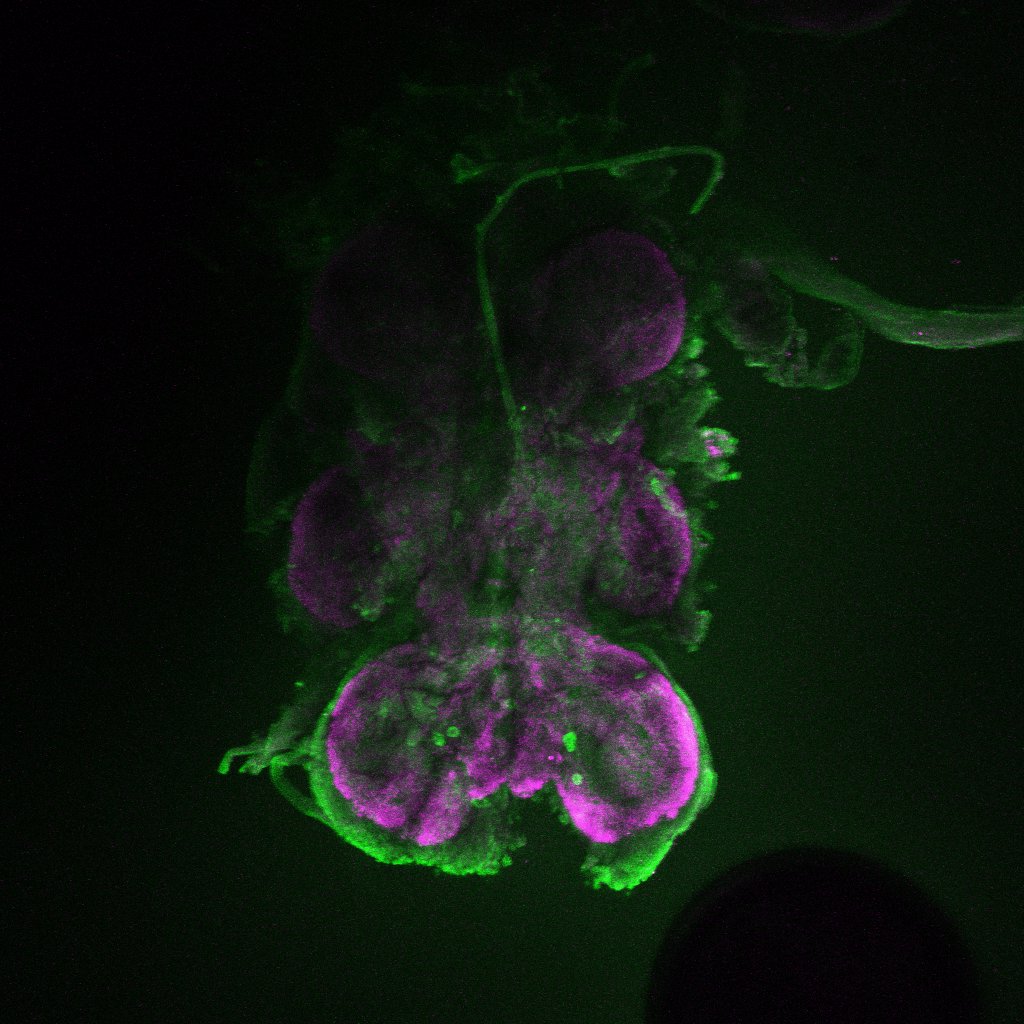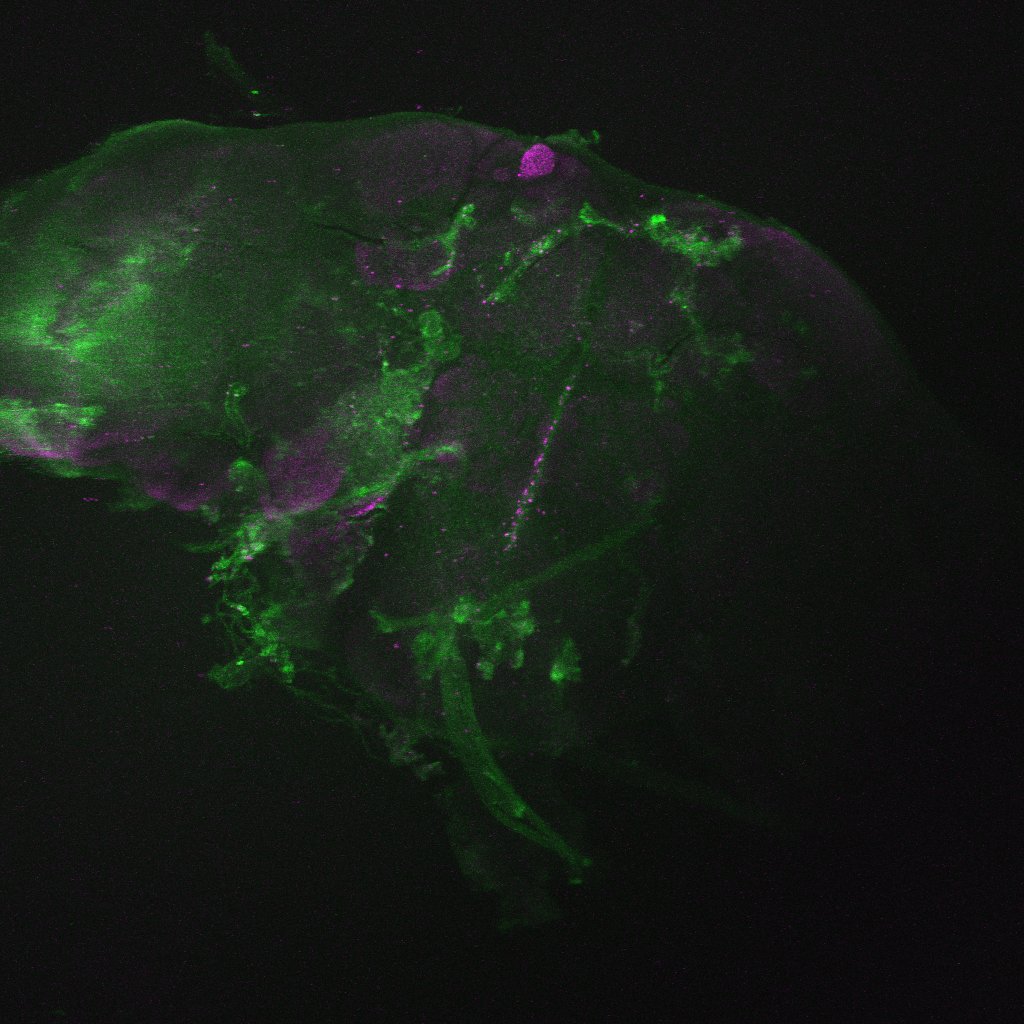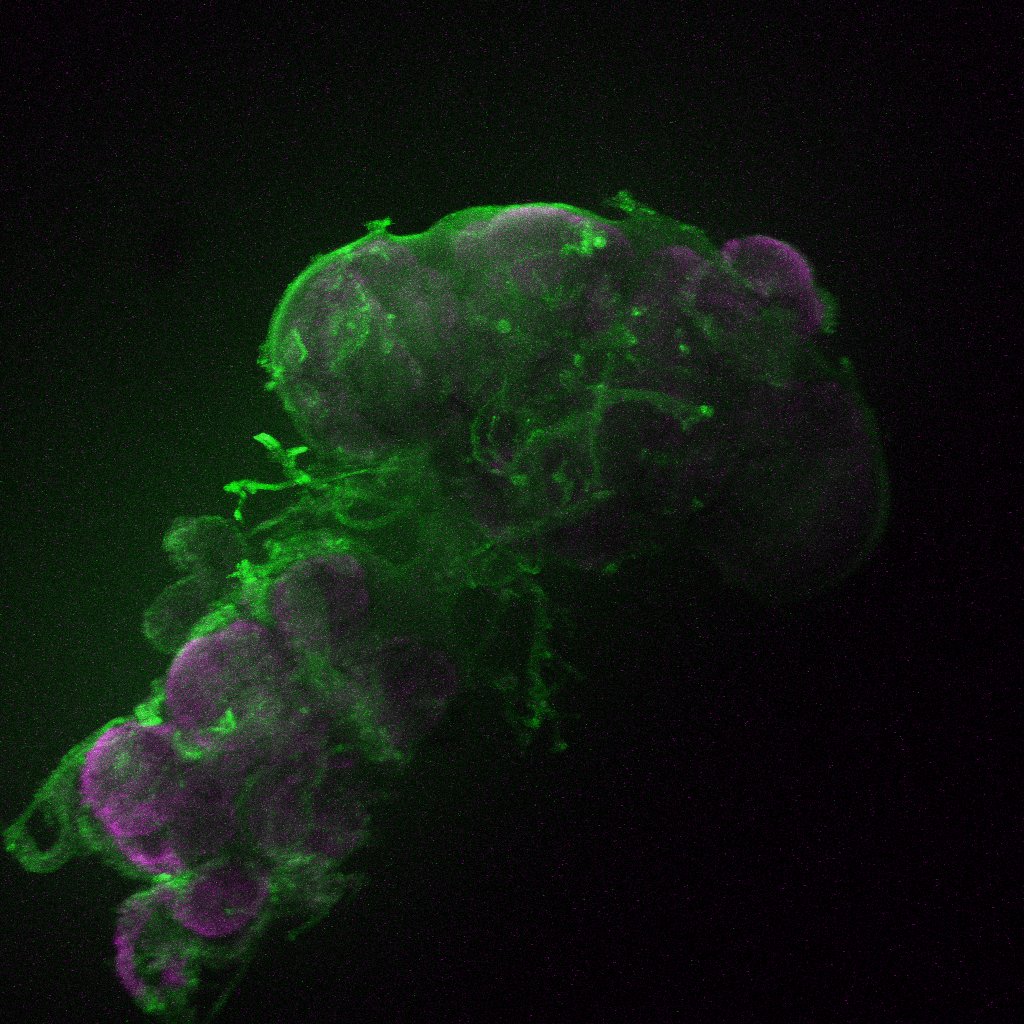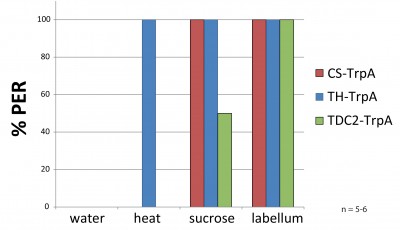TbH QF system
on Monday, September 12th, 2016 1:37 | by Axel Gorostiza
In order to study the role of OA and DA in photopreference I am constantly looking for new drivers that label subpopulations of these groups. I recently found a TbH driver from the QF system, and wanted to know how representative of the TDC2-G4 neurons was. I have established a QUAS-mCherry;TbH-QFs line (Magenta) and crossed it with TDC2-G4;UAS-GFP (Green). In both cases, what is shown is the endogenous expression.
Category: Anatomy, Biogenic Amines, wing clipping | No Comments
Update: DA and OA in photopreference
on Monday, August 1st, 2016 2:24 | by Axel Gorostiza
This is an update of the T-maze experiments for flies with OA and DA neurons manipulated.
- TH-G4s x shiTS. Except for 2 groups the N is at least 5.
2. TbH-lexAs x shiTS. Last year I tried to complete this experiment and several problems appear. Now I am starting to do it again and it seams that it works. N=4.
3. I am starting to test the same TbH lines crossed to TrpA1. So far, not much to say.
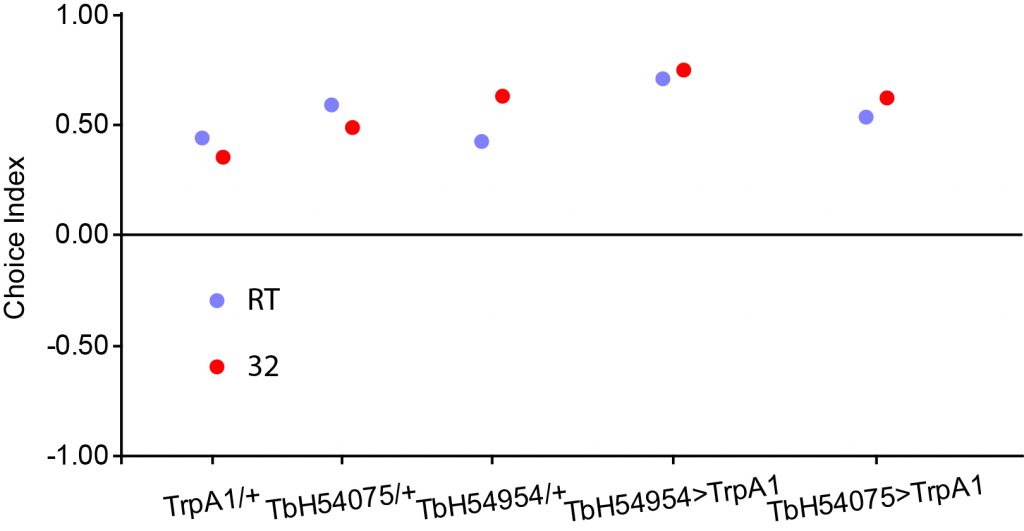
Category: Biogenic Amines, wing clipping | No Comments
Photopreference TH subgroups
on Monday, May 23rd, 2016 2:02 | by Axel Gorostiza
After finishing the first round of the screen to find out the DA substrate of the photopreference, I decided to change the genetic background of the GAL4s and UAS. Now all of them are in WTB background.
Here are the first results. It is only an n of 1.
Update:
Category: Biogenic Amines, wing clipping | 2 Comments
Flying ability with DA or OA neurons silenced
on Monday, February 15th, 2016 1:50 | by Axel Gorostiza
As a control for my T-Maze experiments I decided to test if treated flies were able to fly at the same conditions they were tested in the T-Maze (32°C).
As in the T-Maze experiments, I put the flies 15 min at 32°C before testing them at the same temperature. The, I measure the duration of the first spontaeous flight (Blue). If within 5min the fly doesn’t start to flight, I gently remove the steroform ball from the legs (Red), simulating a takeoff.
Details from 0 s to 200 s.
Category: Biogenic Amines, wing clipping | No Comments
Flying capability of flies with DA neurons silenced
on Monday, February 8th, 2016 9:34 | by Axel Gorostiza
As a control for my T-Maze experiments I decided to test if treated flies were able to fly at the same conditions they were tested in the T-Maze (32°C).
As in the T-Maze experiments, I put the flies 15 min at 32°C before testing them at the same temperature.
The dashed line at 11 min indicates when a T-Maze experiment would have ended.
Almost all flies tested flew more than the time required to perform a T-Maze experiment.
Category: Biogenic Amines, wing clipping | No Comments
Octopaminergic neurons and phototactic flexibility
on Monday, February 1st, 2016 12:46 | by Axel Gorostiza
In previous experiments, I found one TβH(lexA)>shiTS combination that recapitulated TDC2>shiTS T-Maze results (https://lab.brembs.net/2015/09/looking-for-the-da-oa-neurons-involved-in-phototactic-flexibility/). Here I present the expression pattern of those two TβH-lexA drivers used.
TβH54954-LexA (Brain)
TβH54954-LexA (VNC)
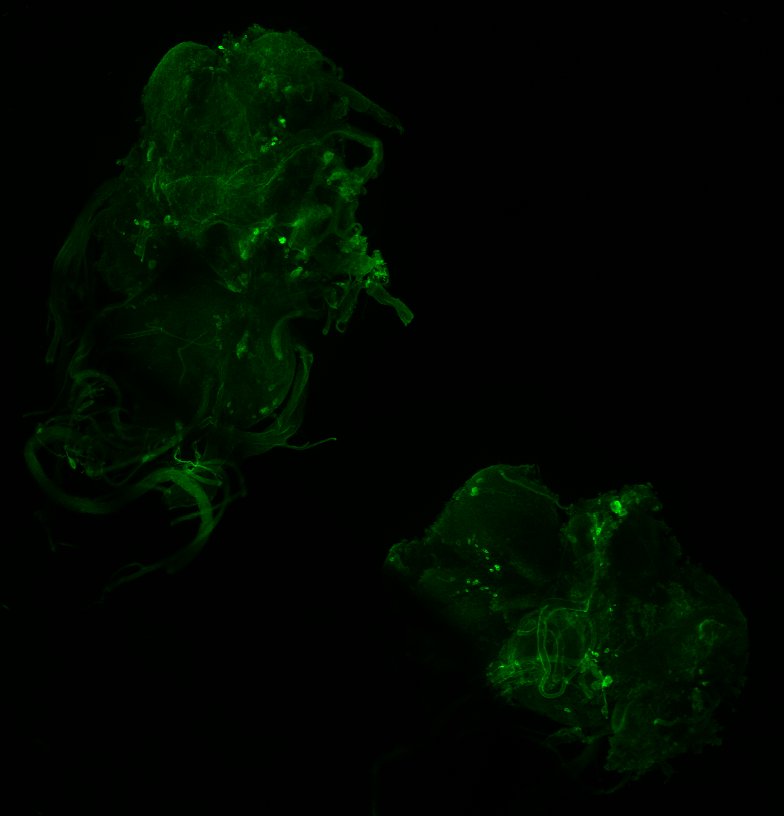
TβH54075-LexA (Brain & VNC)
Category: Anatomy, Biogenic Amines, wing clipping | No Comments
Optogenetics – My results vs. Lena’s results
on Monday, November 23rd, 2015 2:42 | by Katrin Hofweber
Last week I continued the experiments for the optogenetics. These are my results:
and these are Lena’s results:
Compared to Lena’s results, my results are a bit too positive.
Phototactic flexibility – Neural substrates
on Monday, November 23rd, 2015 2:29 | by Axel Gorostiza
In order to find which dopaminergic and octopaminergic neurons are related to light preference and the switch on it seen after clipping the wings, I decided to use a tool called CaLexA.
Here we can see my first attempt to use it. We can see the CNS from TH>CaLexA flies with and without wings.
I did not see any special signal in the brains, but I still have to play around a little bit more.
With Wings
Without Wings
Category: Anatomy, Biogenic Amines, wing clipping | No Comments
Tdc2 and Bruchpilot in flight
on Tuesday, March 26th, 2013 7:00 | by Christine Damrau
Tested the third cross. Now, it is around 15n each group. After a control experiment I preferred a recovery time of 1h instead of 5h. A short pilot for control groups showed that Tdc2virgins crossed to w1118males have a flight defect.
3rd
Category: Biogenic Amines, flight | 4 Comments
Usage of TrpA with infrared lamp
on Wednesday, February 13th, 2013 11:40 | by Christine Damrau
As a pilot for future experiments I tried to reproduce results from Keene et al., 2012. There, they substituted sugar by a laser to provoke PER after 24h of starvation (females, one week old). In TH-GAL4 they found 100% response when they pointed the laser to head or thorax. In tdc2-GAL4 indeed they found 50% of flies responding to heat but only when the laser was pointed to the thorax but not to the head.
Since we do not have this kind of laser, they used, I played around with an infrared light. Flies were fixed to hooks and a clamp as always. First, there was given a filter paper soaked with EVIAN-water (negative control), then there were 10s of heat (36-38°C), afterwards two positive controls: 30% sucrose on the legs and finally on the labellum.
In the figure, you can see that I am able to reproduce the methods with an infrared lamp instead of a laser. The TH-GAL4 flies crossed to TrpA respond much more to heat compared to the controls (see figure in blue and red). The proboscis extension appears already after a few seconds.
Unfortunately, I could not reproduce the results for tdc2-GAL4 (see figure in green). There was no response to heat found at all. (tdc2-GAL4 has to be ok, because I see fluorescence when crossed to GCaMP). Interestingly, the flies did not respond as strong to the 30% sucrose as expected. The starvation may have to be longer to increase motivation?
Next step will be to see a phenotype that can be seen by activating tdc2-GAL4. That may be PER after longer starvation or flight behavior.
Category: Biogenic Amines, crosses, genetics, neuronal activation, PER, TrpA | 1 Comment
